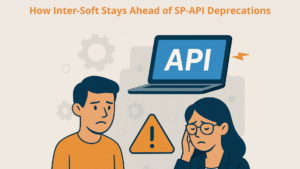Unveiling the Exciting Advancements in Progressive Web Apps (PWAs)
Table of Contents
ToggleEmbarking on a journey that seamlessly blends the power of web technology with the immersive experience of native applications, Progressive Web Apps (PWAs) have emerged as a force to be reckoned with. In this captivating blog post, we delve into the latest news and captivating developments that surround PWAs, including thei skyrocketing market growth, groundbreaking technological advancements, and widespread adoption across industries.

Market Growth and Adoption:
The realm of progressive web applications is poised for remarkable expansion, as experts predict a meteoric rise in its market value, reaching an astounding $10.77 billion by 2027. With a remarkable year-on-year growth rate exceeding 30%, PWAs are poised to revolutionize the digital landscape. Undeniably, the momentum behind PWAs is undeniable, as desktop installations have surged by a staggering 270% since the dawn of 2021. Pioneering companies like Pinterest have harnessed the potential of PWAs by amalgamating them with native apps, thereby bolstering user retention and broadening their outreach.
PWA Summit 2022 Highlights:
A symphony of digital innovation orchestrated by industry giants, the second PWA Summit, hosted by Google, Intel, Microsoft, and Samsung, took center stage, casting a vibrant spotlight on the latest advancements within the realm of PWAs. This grand gathering of luminaries underscored the significance of comprehending PWAs and their unrivaled capabilities, including the attainment of a native look and feel through cutting-edge APIs.

Tools and Technologies:
In the pursuit of simplifying PWA development, Microsoft has unveiled its formidable PWABuilder toolchain, a comprehensive suite that equips developers with all the necessary resources to craft powerful PWAs from scratch or augment existing projects with PWA capabilities. Leveraging the prowess of PWABuilder Studio’s Visual Studio Code extension, developers can seamlessly manage manifests and validate PWAs, ensuring a frictionless and streamlined development process. Within the vibrant web development community, ingenious solutions such as absurd-sql and wa-sqlite have emerged, empowering developers to effortlessly work with IndexedDB and execute SQL queries on local data, paving the way for unprecedented possibilities.

Platform Support:
Taking a pivotal role in propelling PWA development forward, Microsoft has embraced the mantle by introducing an extensive suite of tools under the banner of “PWABuilder.” Collaborating harmoniously with Google, this dynamic partnership has enabled the proliferation of PWAs across multiple platforms, revolutionizing the digital landscape. Joining the ranks of PWA enthusiasts, Apple has made a resounding announcement, bolstering the support for Service Workers and Web App Manifest within its Safari browser, enabling developers to create, distribute, and seamlessly update PWAs, further amplifying their reach and impact. However, it is worth noting that Mozilla Firefox, at present, does not provide support for PWAs within its desktop application, leaving room for potential future developments.

Emerging Trends:
With the world rapidly embracing the mobile revolution, businesses are fervently racing to create PWAs that deliver app-like experiences on handheld devices, transcending the limitations of platforms and captivating a broader audience. Embracing the transformative potential of voice technology, Google has unleashed an array of powerful tools, including natural language processors, thereby enabling voice interactions with PWAs. This revolutionary integration paves the way for enhanced customer engagement and elevated service delivery. Delving deeper into the realm of user experience, motion-based interfaces, including gesture recognition, are poised to redefine the way users interact with PWAs. Motion-based interfaces and gesture recognition are enhancing the user experience of PWAs by introducing intuitive and interactive ways for users to navigate and interact with the applications. Here are some ways in which these technologies are making a difference:
- Natural and Intuitive Navigation: Motion-based interfaces and gesture recognition allow users to navigate through PWAs using natural movements and gestures. This eliminates the need for traditional clicks and taps, providing a more intuitive and seamless user experience.
- Enhanced Interactivity: By incorporating motion-based interfaces and gesture recognition, PWAs can offer enhanced interactivity. Users can perform actions such as swiping, pinching, and rotating to interact with content, manipulate objects, or navigate between different sections of the application.
- Immersive Experiences: Motion-based interfaces and gesture recognition can create immersive experiences within PWAs. For example, users can tilt their devices to control the perspective of a 3D object or use gestures to trigger animations and visual effects, adding depth and engagement to the user experience.
- Accessibility: These technologies also have the potential to improve accessibility in PWAs. Users with physical disabilities or limitations may find it easier to interact with motion-based interfaces and perform gestures compared to traditional input methods, such as mouse clicks or keyboard inputs.
- Differentiation and Engagement: Incorporating motion-based interfaces and gesture recognition can help PWAs stand out from traditional web applications. These interactive and engaging features can captivate users, increase their time spent on the application, and enhance overall user satisfaction.
With each passing day, the realm of Progressive Web Apps unveils new frontiers of innovation and potential. As market growth surges, technological advancements flourish, and industry adoption soars, it is evident that PWAs have emerged as a transformative force that will shape the future of our digital landscape.








